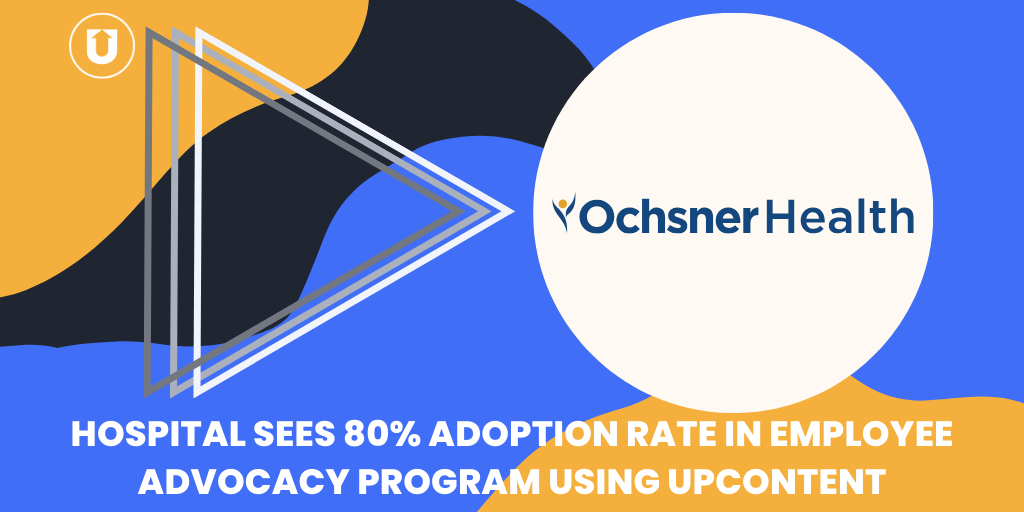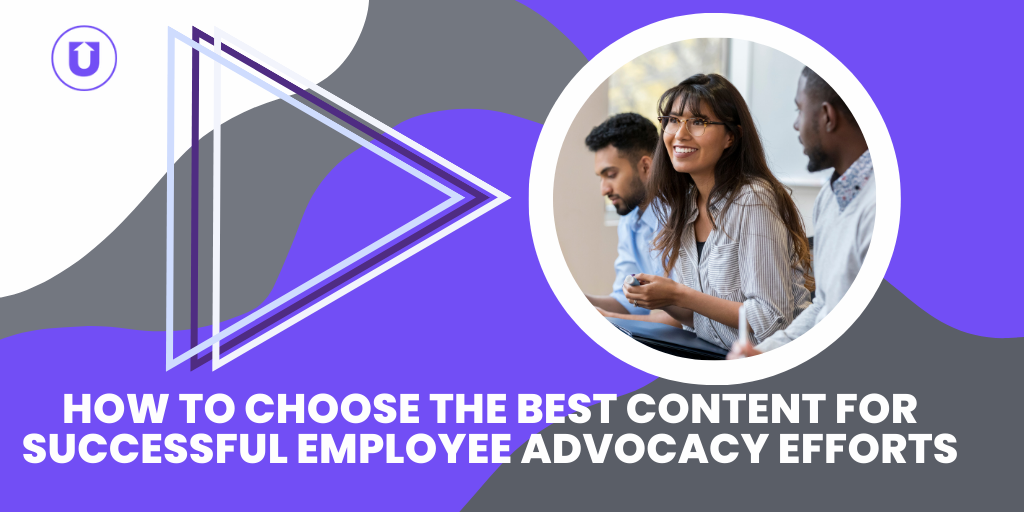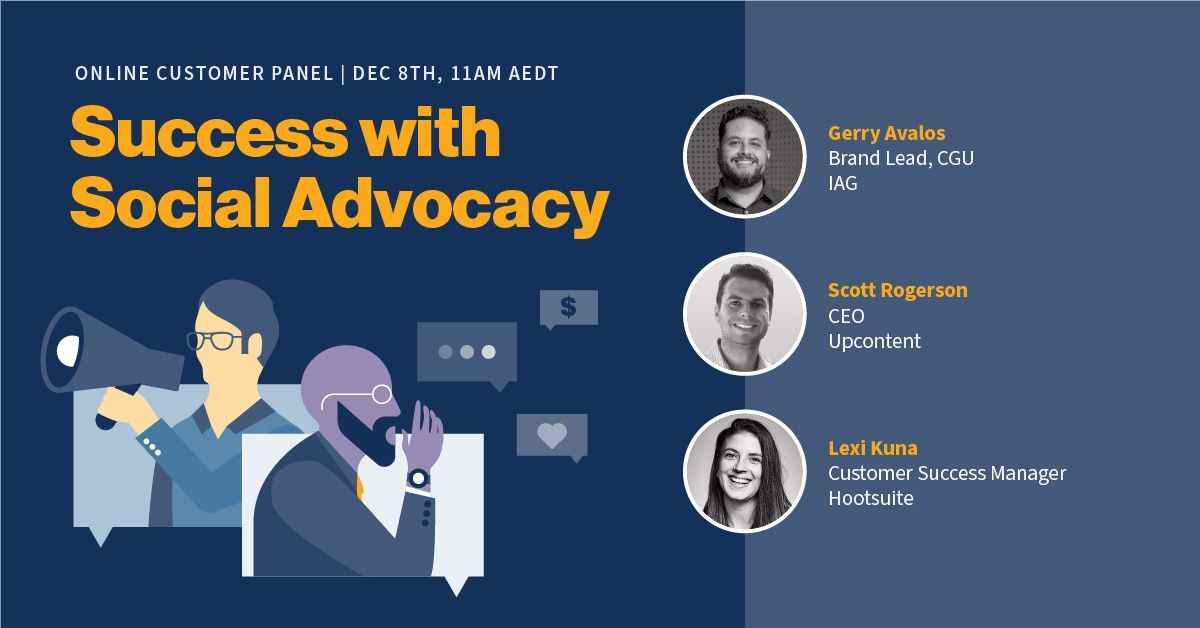How To Encourage Your Employees To Build A Personal Brand

More and more, the buzz around brands is increasingly generated not just by corporate accounts but by their employees.
These individuals, empowered with the right tools and content, are transforming how businesses engage online, especially on professional networks like LinkedIn.
Customers want to engage with people rather than a faceless brand. Even in the B2B world, business is still done human to human, so allowing your employees to humanize your brand is a proven way to build trust.
In fact, 76% of individuals surveyed say they’re more likely to trust content shared by “normal” people than that shared by brands.
So, how do you get your employees to share consistently online, and how do you ensure what they are sharing still aligns with company values?
That’s where creating an employee advocacy program is beneficial, and there are many ways to go about it, but the biggest hurdles we encounter when aiding our customers in launching these programs are:
- How to create and/or find enough content
- Ensure that content is compliant and high-quality
- Getting employees to share the content without artificial incentives
Here at UpContent, we have seen that when employees have easy access to a lot of fresh, high-quality content on topics they are interested in - including company-created content, they are more likely to get engaged and stay engaged.
Here are some of the benefits of employee advocacy, how to encourage your employees to build a personal brand online, and how to implement an effective employee advocacy strategy,
Benefits of Employee Advocacy
The key to any employee advocacy program's success is ensuring both the individual and the company are getting something out of it.
It shouldn’t feel like an additional responsibility of someone’s job or that you’re trying to take advantage of your employee’s social following to get your brand’s message out.
An employee advocacy program supports the employee’s personal brand, giving them the resources and tools needed to create an authentic, credible presence that reflects positively back on the company they work for.
When LinkedIn first started, many people would log in and refresh their profiles before starting a new job search, career change, etc.
But LinkedIn isn’t just a job board now; it’s a space where your employees can be your biggest advocates.
In fact, according to LinkedIn Research, users who share advocacy content see 600% more profile views and grow their networks 3x faster - it seems like a great reason to encourage personal brands!
Here’s an overview of some benefits of a healthy advocacy program for employees AND companies.
Advantages for Employees
Career Growth Opportunities: Establishing a robust LinkedIn profile is 2024’s way to maintaining a dynamic, live portfolio.
You can show other professionals in your field what you can do, your achievements, and that you are “tuned in” to what’s happening in your industry.
Recognition and Opportunities Within the Workplace: As you become a more active voice online, you’ll naturally become a chosen spokesperson.
We have seen many of our customers here at UpContent given speaking opportunities at conferences, industry events, webinars, and more when active in their employee advocacy and social selling programs.
Monetizing Expertise: Employees have the opportunity to leverage their professional expertise beyond their day-to-day work.
This can include creating and selling online courses, launching paid newsletters, engaging in speaking engagements, or promoting charitable or non-profit causes they are passionate about
Advantages for Companies:
Enhanced Organic Visibility: The company's visibility naturally increases when employees actively share and engage on platforms like LinkedIn.
This leads to higher web traffic and more robust engagement with the company’s online content.
Broader Exposure Through Employee Networks: Employees who build strong personal brands often receive invitations to speak on podcasts or at events.
This exposure benefits the company by associating it with influential platforms and audiences.
Authenticity and Trust Building: In an era where markets are increasingly dominated by automated and AI-driven tools, the human element in branding becomes crucial.
People are already concerned about who is sharing information, so providing your audience with a human behind the messaging helps you maintain the authentic connection people are craving.
Increased Sales: Engaging in social media isn’t just about visibility; it impacts the bottom line.
Data from LinkedIn suggests that companies with high levels of social engagement see a 57% increase in sales leads, underlining the tangible benefits of active employee participation in social media.

Talent Attraction and Retention: If your company is offering a strong advocacy program, it can be a valuable differentiator to retain your team as well as attract other high performers.
How To Encourage Your Employees To Get Active In Building Their Personal Brands
So, how do you get started building an employee advocacy program that will work?
Help your employees build their personal brand to demonstrate their expertise and passions, benefiting their career growth and your company's brand.

Providing the proper support and guidance can help your employees shine as individuals and contribute more significantly to your organization's success.
Here are three ways you can help your employees with their personal brands.
1. Help Them Find Their Niche
Encourage your employees to share content that resonates with their personal and professional identity.
Personal branding for employees extends beyond merely sharing company-created content - it involves nurturing their individuality and expertise.
Encourage them to explore and share content that reflects their unique professional insights and personal interests.
With platforms like LinkedIn favoring content that showcases real-world expertise, posts grounded in personal experiences and professional knowledge tend to gain more traction than generic corporate announcements.
2. Provide Support When and Where You Can
Offer support beyond just the initial “Here’s the program, ready, set, go!”.
One of our customers, Oschner Health, has built a “Thought Leadership Program,” where they train each employee enrolled in the program with a detailed onboarding, and they send out multiple email newsletters with company-created content and curated content tailored to the employee’s job.
By providing their employees with the right support and content, they have seen an 80% adoption rate in their employee advocacy program.
3. Model the Behavior
Lead by example to inspire employees in their personal branding journey.
Leading by example is one of the most effective ways to encourage employees in personal branding.
When company leaders and managers actively engage in personal branding efforts, it sets a precedent and motivates employees to follow suit.
This can involve actively sharing content, participating in discussions, and showcasing your expertise on platforms like LinkedIn.
How To Implement An Effective Employee Advocacy Program
Now that you know how to encourage and motivate your employees to share content online to build their personal brands, let’s talk more about how to provide the right resources and get your program off the ground.
Provide Enough Of The Right Content
What is “the right content” in the context of employee advocacy?
The content your employees want to share and are excited to share with their audience.
Usually, this is a mix of company-created content and curated content (relevant third-party articles) that address a number of topics, questions their audience has, and general interests they have.
Even if you have a great library of evergreen content your company created, the likelihood that your marketing team can keep up with the demand for fresh, engaging, and impactful content isn’t sustainable.
One of our customers, Canada Life (one of Canada’s largest insurance providers), found that when they provided more curated content so that every time an advisor logged into their employee advocacy tool, they had fresh content to choose from, they were much more engaged.
This effort led to more leads for their advisors, who were sharing a mix of company and curated content, and having more content available to choose from helped keep their employees coming back for more.
Ensure The Content Is High-Quality and Compliant
Ask your employees what publishers they trust, and find similar organizations to source content from.
If you’re in a highly regulated industry like financial services, how do you make sure that the content you’re making available is compliant?
If you have ever had to send an article to compliance, you know it can take so long to get just one article approved, so if we’re talking about making even MORE content available, there has to be a better way.
And there is.
Proofpoint directly integrates with UpContent, which can automatically scan curated articles sourced within UpContent against a compliance policy you can set up, so any article made available to your employees is already safe and ready to go.
Summit Financial, one of UpContent’s customers, has used Proofpoint and UpContent to supply fresh content daily to more than 40 advisors, spanning over 20 topics and 50 publishers, something that could never be done manually.
Within 12 months of launching their employee advocacy program, Summit Financial advisors saw an average of nearly 100 engagements on their curated posts each month.
Make It Easy For Your Employees To Share That Content
Humans naturally take the path of least resistance, so ensuring your employees have easy access to the library of content they can share online is one of the biggest hurdles and one of the easiest to solve.
Using a social sharing tool like Hootsuite or EveryoneSocial that has employee advocacy baked into the product gives your team access to custom libraries that are uniquely created for your team, pre-approved, and ready to go.
You can add your company’s content as well as content you’ve curated manually or with a content curation tool like UpContent into one place that’s connected to their social media accounts.
Cherry Bekeart used Hootsuite’s Amplify and Curate by UpContent to create a custom library that their ambassadors can easily access and share on their LinkedIn profiles.
They also built a custom intranet that anyone in the company can access, with a massive library continually updated with the latest content from publishers they know and trust.
Next Steps To Start Helping Your Employees Build Their Personal Brands
Establishing a robust employee advocacy program is not just about enhancing your brand's reach; it's about empowering your employees to be authentic representatives of your company and themselves.
By fostering a culture where personal branding is valued and supported, you create a dynamic environment where both employees and the company thrive.
Ready to start building your employee advocacy library? Watch a quick demo to see if UpContent is a good fit for your program.
If you want to learn more about building your employee advocacy program, check out some of these other articles and case studies!



